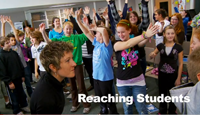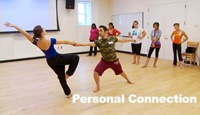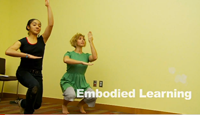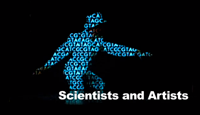Some discussion of the Science Choreography initiative by Liz Lerman, Laura Grabel and Michael Weir
Ideas explored in videos here
Read more about Ferocious Beauty: Genome from Choreographer Liz Lerman
Was Einstein a science choreographer?
From Our Experiences
Encouraging inclusion / Breaking barriers for future participants in science
Students feel empowered and encouraged to participate in science class. By making connections to their science teacher through the arts, students can then feel part of the science class – an invitation for inclusion – in a setting that helps students think by reducing their stress.
Appealing to emotion and beauty in science
Through Performance, Dance, Videography and Music.
A “Concepts Box” for Learning
As a pathway to deep learning and a higher level of excellence, our learning in science and art share processes:
- Dissection of a concept;
- Seeing gaps in our knowledge;
- Generating ideas/movements followed by editing and iteration;
- Experimenting/rehearsing followed by constructive critique and learning from mistakes;
- Learning through teamwork and collaboration.
Kinesthetic Learning
Associating movement with ideas provides a framework for associating and remembering complex ideas
Embodied Learning
A valuable thinking skill for scientists is to model a process by embodying it – exposing its essence. Embodied learning lets us move beyond descriptions to generative models – it encourages us to expose core concepts and component building blocks for a process.
Abstraction
Unlike illustrations in a textbook, which are often considered descriptions of reality, embodied movement is clearly a representation in a parallel medium – the modeling abstraction property is clear.
Dissemination of Science Choreography
Dissemination of this initiative is through a “second textbook” – Ferocious Beauty: Genome – and web modules.
Classroom Tools for participatory learning – toolbox
Tools from movement/dance can be used effectively in the science classroom – in middle and high schools, and in college-level general education, introductory, or advanced courses.
Reflection
Immediate or later, oral or written, reflection serves to deepen the experience of embodied learning – it adds intellectual rigor and encourages students to take the experiential learning more seriously.
Science Choreography: a way to reach students and break barriers
Science and the Arts: making a personal connection
Embodied Learning: a way of thinking











